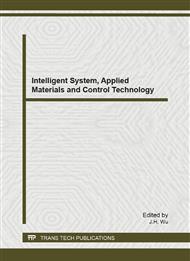[1]
V. Gordon, J. Proth, C. Chu. A survey of the state-of-the-art of common due date assignment and scheduling research. Eur. J. Oper. Res. Vol. 139 (2002), pp.1-25.
DOI: 10.1016/s0377-2217(01)00181-3
Google Scholar
[2]
T. C. E. Cheng, L. Y. Kang, C. T. Ng. Due-date assignment and parallel-machine scheduling with deteriorating job. J. Oper. Res. Soc. Vol. 58 (2007), pp.1103-1108.
DOI: 10.1057/palgrave.jors.2602225
Google Scholar
[3]
B. Shirazi, H. Fazlollahtabar, N. Sahebjamnia. Minimizing Arbitrary Earliness/Tardiness Penalties with Common Due Date in Single-Machine Scheduling Problem Using a Tabu-Geno-Simulated Annealing. Mater. Manuf. Process. Vol. 25 (2010), pp.515-525.
DOI: 10.1080/10426910903365828
Google Scholar
[4]
C-J Hsu, S-J Yang, D-L Yang. Due-date assignment and optional maintenance activity scheduling problem with linear deteriorating jobs. J. Mar. Sci. Technol. Vol. 19 (2011), pp.97-100.
DOI: 10.51400/2709-6998.2141
Google Scholar
[5]
C-J Hsu, S-J Yang, D-L Yang. Two due date assignment problems with position-dependent processing time on a single-machine. Comput. Ind. Eng. Vol. 60 (2011), pp.796-800.
DOI: 10.1016/j.cie.2011.01.017
Google Scholar
[6]
W-H Kuo, D-L Yang. Minimizing the total completion time in a single-machine scheduling problem with a time-dependent learning effect. Eur. J. Oper. Res. Vol. 174 (2006), pp.1184-1190.
DOI: 10.1016/j.ejor.2005.03.020
Google Scholar
[7]
D. Wang, J-B Wang. Single-machine scheduling with simple linear deterioration to minimize earliness penalties. Int. J. Adv. Manuf. Technol. Vol. 46 (2010), pp.285-290.
DOI: 10.1007/s00170-009-2086-8
Google Scholar
[8]
G. I. Adamopoulos, C. P. Pappis. Scheduling jobs with different, job-dependent earliness and tardiness penalties using the SLK method. Eur. J. Oper. Res. Vol. 88 (1996), pp.336-344.
DOI: 10.1016/0377-2217(94)00191-x
Google Scholar
[9]
R. L. Graham, E. L. Lawler, J. K. Lenstra, A. H. G. Rinnooy Kan. Optimization and approximation in the deterministic sequencing and scheduling: a survey. Ann. Discret. Math. Vol. 5 (1979), pp.287-326.
DOI: 10.1007/978-94-009-7801-0_3
Google Scholar


